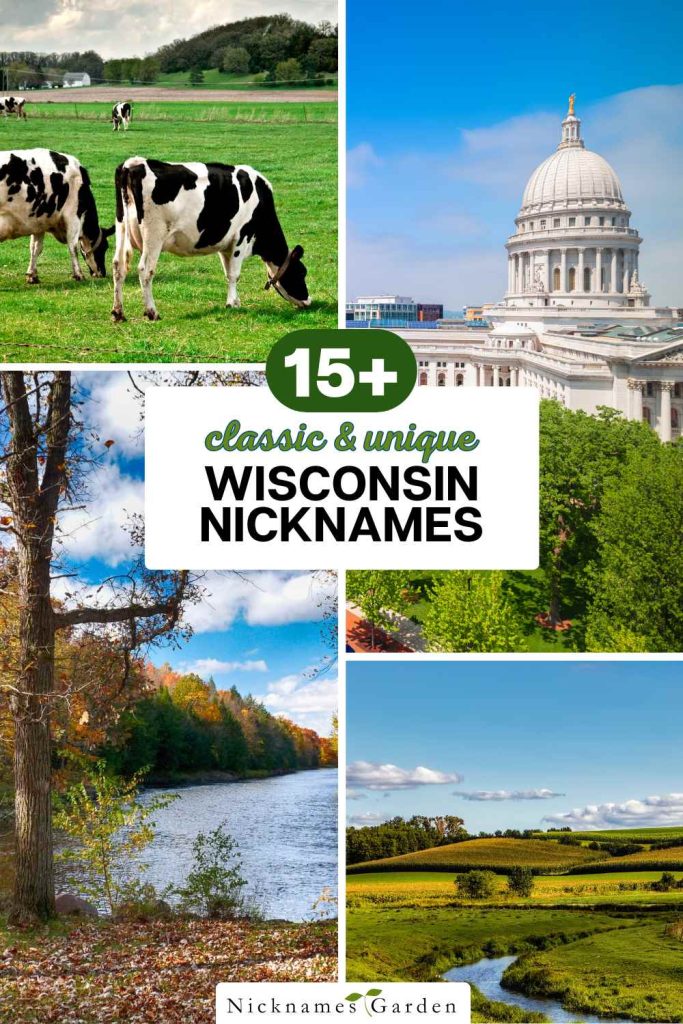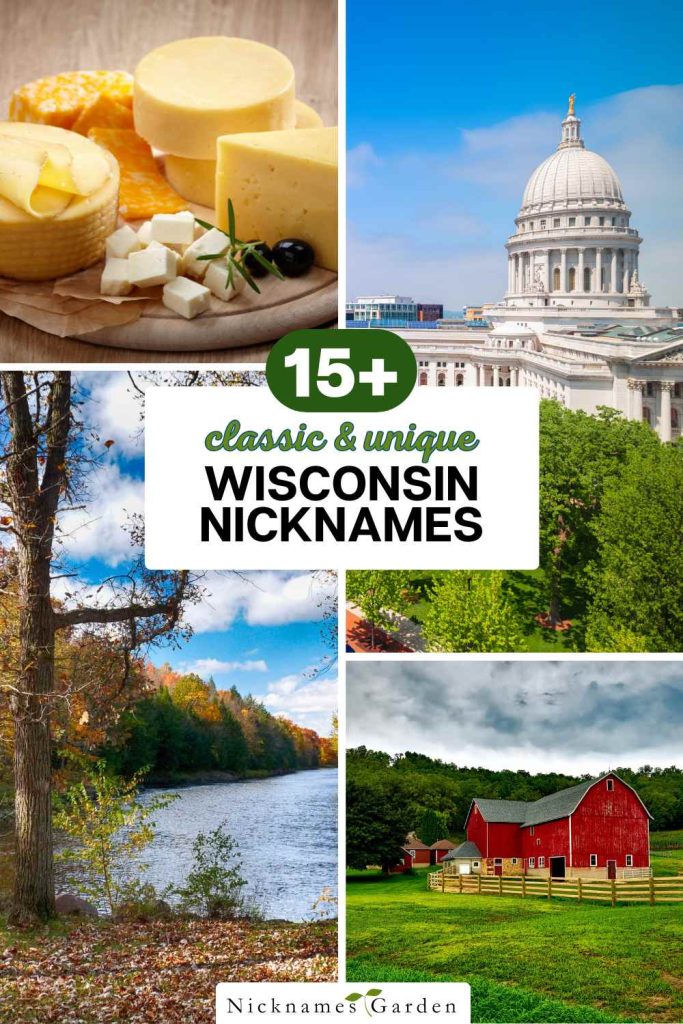Discover the rich tapestry of Wisconsin nicknames, from historical and geographical origins to cultural and modern-day influences.
Explore the stories behind each name and learn how they shape the state‘s unique identity.
Historical Nicknames
The Badger State
Origin and History:
- The nickname “The Badger State” originates from the 1820s.
- Early miners, who worked in lead mines, lived in temporary shelters burrowed into hillsides, similar to badgers.
- Over time, the nickname became a proud identifier for Wisconsin residents.
Significance to Wisconsin Culture:
- The badger symbolizes perseverance and hard work.
- The University of Wisconsin’s mascot, Bucky Badger, embodies this nickname.
- Various state emblems and logos feature the badger, reinforcing its cultural importance.
America’s Dairyland
Historical Context:
- By the late 19th century, Wisconsin shifted from wheat to dairy farming.
- Innovations in dairy production and cooperative creameries fueled this transformation.
- The state became a leader in dairy production, earning its famous nickname.
Importance of Dairy Farming:
- Wisconsin produces more cheese than any other state, contributing to its identity as America’s Dairyland.
- The dairy industry supports thousands of jobs and plays a critical role in the state’s economy.
- Celebrations like the Wisconsin State Fair highlight the importance of dairy farming.
The Copper State
Mining History:
- Copper mining in Wisconsin dates back to the prehistoric era, with evidence of mining by Native Americans.
- In the 19th century, European settlers capitalized on the state’s rich copper deposits.
- Although not as prominent today, the legacy of copper mining remains part of Wisconsin’s historical identity.
Impact on Wisconsin’s Development:
- Mining spurred the growth of towns and infrastructure.
- The industry attracted a diverse workforce, contributing to the state’s cultural mosaic.
- Historical sites and museums preserve the mining heritage for future generations.
The Lead State
Lead Mining and Early Settlers:
- Lead mining played a crucial role in Wisconsin’s early settlement and development.
- The southwestern region, known as the Lead District, attracted thousands of miners in the early 1800s.
- Communities like Mineral Point emerged as key mining hubs.
Transition to Other Industries:
- As lead mining declined, Wisconsin diversified its economy.
- Agriculture, manufacturing, and timber industries grew, building on the foundations laid by early miners.
- The historical impact of lead mining is still evident in local traditions and architecture.
These historical nicknames provide a glimpse into Wisconsin’s rich past, highlighting the industries and activities that shaped the state’s development.
From the hardworking miners of the Badger State to the thriving dairy farms of America’s Dairyland, these nicknames tell the story of Wisconsin’s enduring legacy.
Geographical Nicknames
The Land of 15,000 Lakes
Number and Significance of Lakes:
- Wisconsin boasts over 15,000 lakes, contributing to its lush and diverse landscape.
- Lakes play a crucial role in the state’s natural beauty and recreational activities.
- Major lakes include Lake Winnebago, the largest in the state, and the famous Great Lakes: Lake Michigan and Lake Superior.
Famous Lakes in Wisconsin:
- Lake Winnebago: Known for its sturgeon population and vibrant fishing culture.
- Lake Mendota: Surrounding Madison, it’s a hub for boating, fishing, and university activities.
- Lake Geneva: A popular resort destination, famous for its scenic beauty and historic estates.
The Driftless Area
Unique Geological Features:
- The Driftless Area is a region that escaped glaciation during the last Ice Age.
- Characterized by steep hills, deep valleys, and fast-flowing streams.
- This area includes parts of southwestern Wisconsin, known for its unique and picturesque landscapes.
Cultural and Ecological Importance:
- The Driftless Area supports diverse ecosystems, including rare plant and animal species.
- Outdoor enthusiasts flock to this region for hiking, fishing, and exploring natural springs.
- Historical sites and small towns in the Driftless Area offer a glimpse into early American frontier life.
These geographical nicknames underscore the natural beauty and unique landscapes that define Wisconsin.
From the abundant lakes that provide endless recreational opportunities to the distinct Driftless Area with its unglaciated terrain, these features highlight the state’s rich and varied environment.
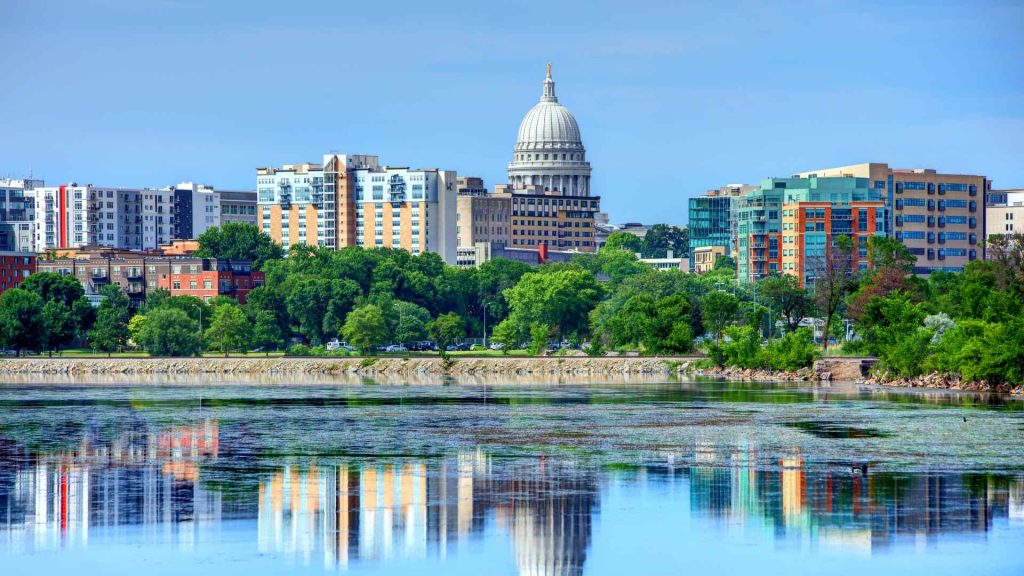
Cultural and Lifestyle Nicknames
The Cheese State
Love for Cheese and Cheese Production:
- Wisconsin is synonymous with cheese, producing more varieties and volume than any other state.
- Cheese production began in the 19th century, with the establishment of small dairy farms and cooperative creameries.
- Today, Wisconsin boasts over 600 varieties of cheese, from classic Cheddar to specialty artisanal cheeses.
Famous Cheese Types and Regions:
- Cheddar: Dominates the cheese scene, with various aging profiles and flavors.
- Colby: Invented in Colby, Wisconsin, known for its mild flavor and firm texture.
- Brick: Unique to Wisconsin, named for the bricks used to press the cheese during production.
- Monroe: Home to Limburger cheese, celebrated at the annual Cheese Days festival.
The Brewer State
Brewing History and Significance:
- Wisconsin’s brewing history dates back to the mid-1800s, with a significant influx of German immigrants.
- Milwaukee became a major brewing hub, home to iconic breweries like Miller, Pabst, and Schlitz.
- Brewing heritage is celebrated through numerous beer festivals and brewery tours.
Milwaukee’s Role in Brewing:
- Known as the “Brew City,” Milwaukee’s identity is deeply intertwined with its brewing history.
- The city houses the Miller Brewery, one of the largest in the world, and a variety of craft breweries.
- Milwaukee’s brewing scene continues to thrive, blending historic and contemporary brewing practices.
The Bratwurst State
Popularity of Bratwurst:
- Bratwurst, a type of German sausage, is a staple in Wisconsin cuisine.
- Often enjoyed at barbecues, festivals, and sporting events, especially during tailgates.
- Bratwurst traditions reflect the state’s German heritage and love for hearty, flavorful foods.
Festivals and Events:
- Brat Fest: Held annually in Madison, one of the largest bratwurst festivals in the world.
- Oktoberfest: Celebrated in many towns, featuring bratwurst as a key culinary attraction.
- Tailgating: A vital part of Wisconsin sports culture, with bratwurst often at the center of game-day meals.
The Green Bay State
Significance of the Green Bay Packers:
- The Green Bay Packers, established in 1919, are the only publicly owned major professional sports team in the U.S.
- The team’s success and community ownership foster a unique and passionate fan base.
- Green Bay, known as “Titletown,” reflects the team’s numerous championships and rich football heritage.
Influence on State Identity:
- The Packers’ presence permeates the state’s culture, with strong support from fans across Wisconsin.
- Lambeau Field, the team’s iconic stadium, is a historic landmark and pilgrimage site for football enthusiasts.
- The Packers’ traditions, such as the “Lambeau Leap,” contribute to the state’s sports identity and pride.
These cultural and lifestyle nicknames highlight Wisconsin’s rich traditions and community spirit.
From the celebrated cheese industry to the passionate fan base of the Green Bay Packers, these aspects of life in Wisconsin contribute to the state’s unique character and enduring appeal.
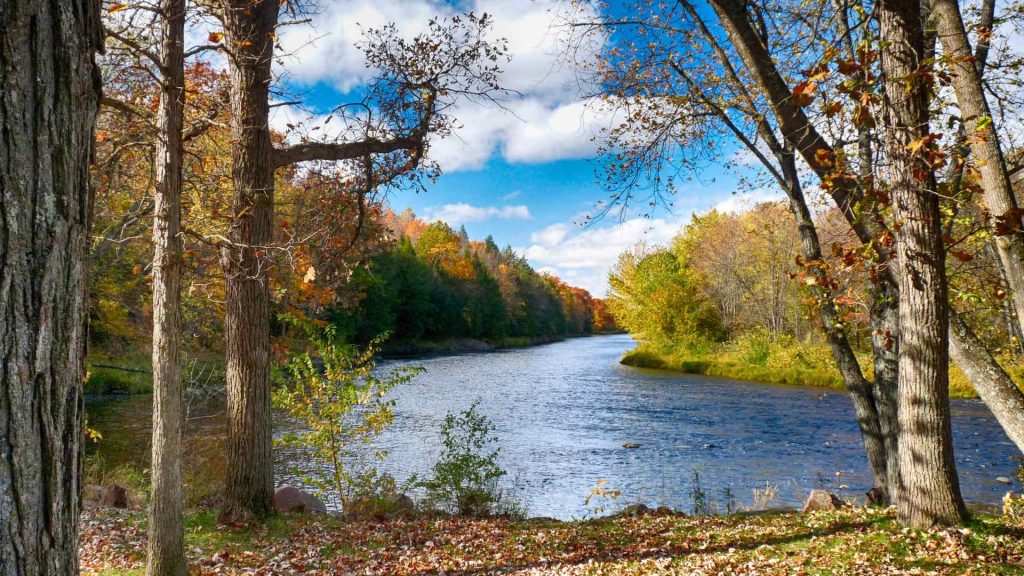
Regional and City-Specific Nicknames
Mad Town (Madison)
Cultural and Academic Influence:
- Madison, affectionately known as “Mad Town,” is the capital city of Wisconsin.
- Home to the University of Wisconsin-Madison, the city boasts a vibrant academic and cultural scene.
- Known for its progressive atmosphere, lively arts community, and active political environment.
Unique Characteristics of Madison:
- Situated between two lakes, Mendota and Monona, offering picturesque views and recreational activities.
- Renowned for its bike-friendly infrastructure and numerous parks.
- Hosts events like the Dane County Farmers’ Market, one of the largest producers-only farmers’ markets in the U.S.
Brew City (Milwaukee)
Brewing Heritage:
- Milwaukee earned the nickname “Brew City” due to its storied brewing history.
- Once home to the “Big Four” breweries: Schlitz, Blatz, Pabst, and Miller.
- Brewing remains a significant part of the city’s identity, with a thriving craft beer scene.
Modern-Day Significance:
- Milwaukee’s Historic Third Ward and Walker’s Point are hubs for new breweries and beer gardens.
- The city hosts beer-related events such as the Milwaukee Brewfest and Oktoberfest.
- Breweries offer tours and tastings, celebrating the city’s brewing legacy.
Titletown (Green Bay)
Green Bay Packers’ Achievements:
- Green Bay is known as “Titletown” due to the Packers’ numerous NFL championships.
- The Packers have won 13 league championships, more than any other NFL team.
- The Vince Lombardi Trophy, awarded to the Super Bowl champion, is named after the Packers’ legendary coach.
City’s Identity Tied to Football:
- Green Bay’s economy and culture are heavily influenced by the Packers.
- The team’s community ownership model fosters a unique bond between the city and its residents.
- Local businesses and landmarks often feature Packers-themed decor and memorabilia.
The Water Park Capital of the World (Wisconsin Dells)
Development of Water Parks:
- Wisconsin Dells, known as “The Water Park Capital of the World,” boasts the highest concentration of indoor and outdoor water parks.
- The area’s first water park, Noah’s Ark, opened in 1979 and remains a top attraction.
- Innovations in water park design and technology originated in the Dells, influencing parks worldwide.
Tourism Impact:
- Wisconsin Dells attracts millions of visitors annually, boosting the local economy.
- The region offers a variety of attractions, including theme parks, resorts, and natural scenic tours.
- Tourism has transformed the Dells into a year-round destination, with activities suited for all seasons.
The City of Festivals (Milwaukee)
Variety and Significance of Festivals:
- Milwaukee is dubbed “The City of Festivals” due to its numerous and diverse celebrations.
- Summerfest: One of the world’s largest music festivals, held annually on the shores of Lake Michigan.
- Polish Fest, German Fest, Festa Italiana: Reflecting the city’s rich ethnic heritage.
Influence on Local Culture:
- Festivals celebrate Milwaukee’s cultural diversity and community spirit.
- Events often feature live music, traditional foods, parades, and cultural exhibitions.
- These festivals attract visitors from across the state and beyond, showcasing Milwaukee’s vibrant cultural scene.
These regional and city-specific nicknames highlight the distinctive identities and cultural significance of various Wisconsin communities.
From the academic vibrancy of Madison to the brewing legacy of Milwaukee, these nicknames encapsulate the unique charm and character of Wisconsin’s cities and regions.
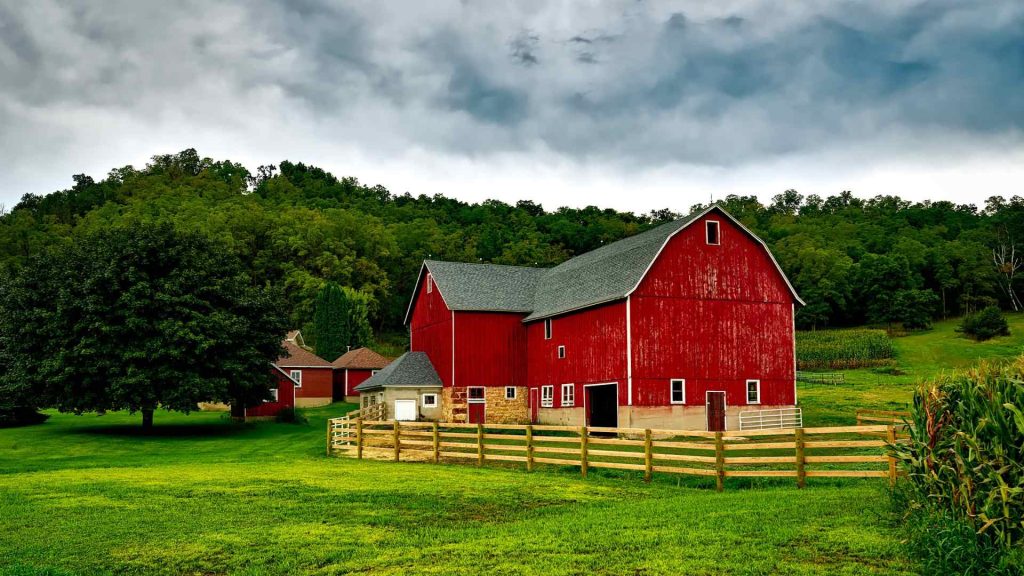
Nature and Wildlife Nicknames
The White Pine State
Forestry History:
- Wisconsin’s dense forests once contained vast stands of white pine, a crucial resource for the state’s early economy.
- Logging began in the mid-19th century, with white pine being the primary target due to its valuable timber.
- Towns like Eau Claire and Stevens Point grew rapidly as logging centers, driving economic development.
Role in State’s Economy and Culture:
- The logging industry not only shaped the economy but also influenced the state’s culture and heritage.
- Logging camps and sawmills became integral parts of communities.
- Today, the legacy of white pine logging is preserved in museums and historical sites.
The Whitetail State
Deer Hunting Culture:
- Wisconsin is renowned for its white-tailed deer population, making it a prime destination for hunters.
- Deer hunting season is a significant event, bringing together communities and boosting local economies.
- Hunting traditions are passed down through generations, creating a strong cultural bond.
Conservation Efforts:
- Conservation programs ensure the sustainable management of deer populations.
- State parks and wildlife reserves provide protected habitats for deer and other wildlife.
- Efforts by organizations like the Wisconsin Department of Natural Resources promote responsible hunting and wildlife preservation.
The Eagle State
Symbolism of the Eagle:
- The bald eagle, America’s national bird, holds a special place in Wisconsin’s natural heritage.
- Eagles are often seen near large lakes and rivers, where they hunt for fish.
- The eagle symbolizes freedom, strength, and a deep connection to nature.
Birdwatching and Wildlife Conservation:
- Wisconsin offers numerous opportunities for birdwatching, with eagles being a highlight.
- Locations like the Mississippi River and Horicon Marsh are popular eagle-watching spots.
- Conservation efforts focus on protecting eagle habitats and ensuring their populations thrive.
These nature and wildlife nicknames reflect Wisconsin’s rich biodiversity and the deep connection residents have with the natural world.
From the historic significance of white pine forests to the cultural traditions surrounding deer hunting and eagle conservation, these elements underscore the state’s commitment to preserving and celebrating its natural heritage.
Modern and Pop Culture Nicknames
The Frozen Tundra
Weather Conditions:
- Wisconsin’s harsh winters, characterized by heavy snowfall and frigid temperatures, have earned it the nickname “The Frozen Tundra.”
- The nickname is most famously associated with Lambeau Field, home of the Green Bay Packers, especially after the 1967 “Ice Bowl” game played in extreme cold.
Influence on Sports and Daily Life:
- The challenging winter conditions are embraced by residents, influencing everything from outdoor activities to transportation.
- Winter sports like ice fishing, snowmobiling, and skiing are popular pastimes.
- The resilience required to thrive in such conditions is a point of local pride.
The Icebox of America
Climate and Winter Activities:
- Wisconsin’s long, cold winters have also led to the nickname “The Icebox of America.”
- The state offers a plethora of winter activities, including ice skating, ice fishing, and winter festivals.
- Communities celebrate the winter season with events like the Winter Festival in Lake Geneva and the Eagle River Snowmobile Derby.
Coping with the Cold:
- Residents have developed a unique culture around enduring and enjoying the cold.
- Innovations such as heated sidewalks in some towns help manage the icy conditions.
- Traditional foods and drinks, like hot cocoa and hearty stews, provide warmth and comfort during the winter months.
Beer Capital of the World
Modern Brewing Scene:
- While Milwaukee’s historic brewing legacy is well-known, the entire state has embraced a vibrant modern brewing scene.
- Wisconsin is home to numerous craft breweries, each offering unique flavors and brewing techniques.
- Events like the Great Taste of the Midwest and Milwaukee Beer Week highlight the state’s dedication to quality beer.
Craft Beer Movement:
- The craft beer movement has seen a resurgence, with small breweries popping up in cities and rural areas alike.
- Breweries focus on local ingredients, innovative brewing methods, and community engagement.
- Wisconsin’s craft beers have garnered national recognition, contributing to the state’s reputation as a top destination for beer enthusiasts.
These modern and pop culture nicknames capture the evolving identity of Wisconsin.
From embracing the icy winters to celebrating a robust beer culture, these nicknames reflect the state’s adaptability and enthusiasm for both tradition and innovation.
Nicknames from Folklore and Legends
The Hodag State
Origin of the Hodag Legend:
- The Hodag is a mythical creature said to inhabit the forests of northern Wisconsin.
- First reported in 1893 by Eugene Shepard, a well-known lumberjack and prankster from Rhinelander.
- Described as a fearsome beast with the head of a frog, the grinning face of an elephant, thick short legs, and long claws.
Cultural Significance and Events:
- The Hodag has become a symbol of Rhinelander, with the town embracing the creature in its identity.
- The annual Hodag Country Festival, one of the Midwest’s largest country music festivals, celebrates the legend.
- Hodag statues and memorabilia are found throughout Rhinelander, attracting tourists and folklore enthusiasts.
The Rhinelander State
Influence of Local Myths and Folklore:
- Rhinelander’s association with the Hodag has extended to a broader cultural identity within Wisconsin.
- The region is rich in folklore, with tales of early settlers and Native American legends intertwining.
- These stories contribute to the unique charm and mystique of northern Wisconsin.
Impact on Community Identity:
- Local businesses and schools incorporate the Hodag into their names and mascots, reinforcing community pride.
- The myth fosters a sense of mystery and adventure, appealing to both residents and visitors.
- Folklore plays a vital role in preserving the history and cultural fabric of Rhinelander and its surroundings.
These nicknames from folklore and legends highlight the whimsical and imaginative side of Wisconsin.
From the fearsome Hodag to the rich tapestry of local myths, these stories and symbols add depth to the state’s cultural heritage, showcasing the unique and often playful spirit of Wisconsin communities.
Conclusion
Recap of Wisconsin Nicknames
- Wisconsin’s nicknames paint a vivid picture of the state’s diverse history, culture, and natural beauty.
- From “The Badger State” reflecting the resilience of early miners to “America’s Dairyland” celebrating the state’s agricultural prowess, each nickname tells a unique story.
- Geographical nicknames like “The Land of 15,000 Lakes” and “The Driftless Area” highlight the state’s stunning landscapes and unique geological features.
